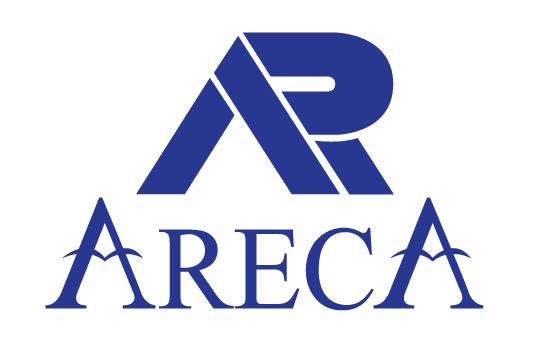Designing a kitchen that combines both aesthetics and practicality requires careful thought regarding the kitchen layout. One of the key principles to consider is the work triangle, which connects the sink, stove, and refrigerator in a manner that promotes ease of movement. A well-planned work triangle enhances efficiency and minimizes unnecessary steps during meal preparation.
Choosing the right surface materials is another important aspect of kitchen design. From countertops to backsplashes, selecting durable and easy-to-maintain materials can significantly impact the overall functionality of the space. Whether you prefer natural stone or engineered options, each material brings its own advantages, affecting both appearance and usability.
Careful attention to these elements will help create a kitchen space that is not only beautiful but also highly functional, making everyday tasks simpler and more enjoyable.
Maximizing Storage Solutions for Small Kitchens
In small kitchens, optimizing every inch is key to achieving a functional space. Integrating vertical storage can significantly free up precious counter space. Wall-mounted shelves not only display decorative items but also hold essential utensils and cookbooks, keeping them easily accessible.
Consider using cabinets that extend to the ceiling. This approach utilizes otherwise wasted overhead space, making it ideal for less frequently used items. Adding pull-out drawers or lazy susans in corner cabinets ensures that every nook serves a purpose, minimizing clutter.
Utilizing the work triangle concept remains vital for flow. Place storage elements close to the cooking areas, so ingredients and tools are just a reach away. A well-placed storage unit can also serve as a divider, creating distinct zones without sacrificing functionality.
Another clever strategy is to incorporate surface materials that offer hidden storage options. For instance, consider a kitchen island with built-in shelving or seating that conceals additional drawers. These multifunctional surfaces enhance usability while maintaining a clean aesthetic.
For more inspiration on maximizing kitchen storage, visit https://www.lindsayhillinteriors.com/.
Choosing the Right Layout for Workflow Efficiency
When planning your kitchen, selecting the appropriate layout is key for maximizing workflow. A well-thought-out kitchen design can significantly enhance your culinary experience and streamline daily tasks.
The classic work triangle, which connects the stove, sink, and refrigerator, is a foundational principle in kitchen layout. This arrangement minimizes unnecessary steps, allowing for seamless transitions between food preparation, cooking, and cleaning.
Consider your cooking habits and how often you entertain guests. U-shaped or L-shaped layouts provide ample counter space while facilitating movement between key areas. For smaller kitchens, a galley layout can be a practical choice, maintaining an efficient workflow without occupying too much space.
Ensure sufficient clearance between each functional zone, as overcrowding can cause disruption. Additionally, plan for easy access to utensils and ingredients; having frequently used items within arm’s reach further promotes a smooth cooking process.
Finally, evaluate the placement of appliances. Their alignment with the work triangle will significantly affect how conveniently you can carry out cooking tasks. A thoughtfully designed kitchen layout prioritizes flow, making your cooking endeavors more enjoyable and productive.
Incorporating Smart Appliances for Convenience
Integrating smart appliances into your kitchen layout can significantly enhance functionality and streamline daily tasks. These devices not only simplify cooking and cleaning but also optimize your time and effort in the kitchen.
When selecting smart appliances, consider how they complement your overall kitchen layout. For example, a smart refrigerator can help manage grocery lists and reduce food waste, while a smart oven allows for remote cooking control, freeing you to focus on other activities.
Smart appliances can also tie into your storage solutions. Many modern devices offer built-in organization features or even integrated storage options, making it easier to maintain a tidy and efficient space. Think about using a smart dishwasher with adjustable racks that can be customized based on your kitchen items.
Additionally, look for appliances that match your preferred surface materials and overall aesthetic. Sleek designs in stainless steel or matte finishes can seamlessly blend into your kitchen, enhancing its visual appeal while providing the benefits of modern technology.
Incorporating smart appliances can lead to a more connected kitchen experience, allowing you to manage tasks more conveniently and enjoy your cooking environment to the fullest.
Selecting Durable Materials for Long-Term Use
When designing a kitchen, the choice of materials can significantly impact both aesthetics and functionality. Prioritizing durability ensures that the space remains practical over time while maintaining its visual appeal.
- Countertop Materials:
- Quartz: Non-porous and resistant to stains, scratches, and heat.
- Granite: Offers natural beauty and exceptional durability, though it requires sealing.
- Butcher Block: Provides a warm, inviting look but requires regular maintenance.
- Cabinetry Options:
- Solid Wood: Long-lasting and can be refinished to maintain appearance.
- Plywood: Stronger than particleboard, with better resistance to moisture.
- Metal Cabinets: Highly durable and perfect for modern or industrial looks.
- Flooring Choices:
- Tile: Water-resistant and incredibly durable, available in numerous designs.
- Luxury Vinyl: Affordable, easy to maintain and offers a variety of styles.
- Engineered Hardwood: Rigid and stable, ideal for areas with moisture exposure.
Consider the work triangle in your design to ensure that durable materials complement functional areas. Each surface material should not only withstand daily use but also enhance the overall storage solutions within your kitchen.
